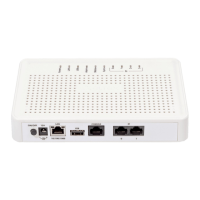SMG digital gateway 9
Remote monitoring:
– web interface;
– SNMP.
SIP/SIP-T/SIP-I Functions
RFC 2976 SIP INFO (for DTMF transmission);
RFC 3204 MIME Media Types for ISUP and QSIG (ISUP support);
RFC 3261 SIP;
RFC 3262 Reliability of Provisional Responses in SIP (PRACK);
RFC 3263 Locating SIP servers for DNS;
RFC 3264 SDP Offer/Answer Model;
RFC 3265 SIP Notify;
RFC 3311 SIP Update;
RFC 3323 Privacy Header;
RFC 3325 P-Asserted-Identity;
RFC 3372 SIP for Telephones (SIP-T);
RFC 3398 ISUP/SIP Mapping;
RFC 3515 SIP REFER;
RFC 3581 Symmetric Response Routing;
RFC 3665 Basic Call Flow Examples;
RFC 3666 SIP to PSTN Call Flows;
RFC 3891 SIP Replaces Header;
RFC 3892 SIP Referred-By Mechanism;
RFC 4028 SIP Session Timer;
RFC 4566 Session Description Protocol (SDP);
RFC 5806 SIP Diversion Header;
SIP Enable/Disable 302 Responses;
Q1912.5 SIP-I;
SIP/SIP-T/SIP-I interaction;
Delay offer;
SIP OPTIONS Keep-Alive (SIP Busy Out).
1.2 Typical Applications
This manual describes several methods of SMG connection.
1.2.1 Interface for TDM and VoIP Network Signalling and Media Streams
In this configuration, the device allows connection of up to 4 E1 streams with various signalling (SS-7, ISDN
PRI/QSIG/CORNET) and service protocols for up to 128 uncompressed channels (G.711 codec), for up to
72 compressed channels (G.729 A / 20-80), or for 54 T.38 fax channels; maximum load intensity—40 cps.
The device connects to an IP network via 10/100/1000 BASE-T network interface using SIP/SIP-T/ SIP-I
protocols.

